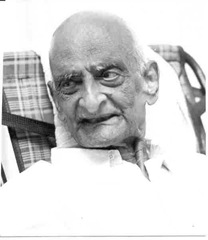The conscious human mind thinks logically. But logical thinking of all human brains is not uniform thinking. The diversity in such logical thinking process of conscious human minds of different human beings creates conflict of understanding as to the truth of Nature or as to what is natural in true natural sense. The conscious human minds of different human beings have found certain logical concepts and terms based on such concepts such as natural, social, national, divine, spiritual, religious, scientific etc.
The natural things are actually innate things happening automatically. In case of human beings, such natural things can be said to be prompted by subconscious human mind. For example, hunger, digestion, sleep etc. are natural things. But it is found that even conscious human mind can engage in natural things knowingly meaning consciously. The inspirational things voluntarily undertaken by conscious human mind can be said to be natural things. But unfortunately, such inspiration is not uniform with all consciously active human minds. This creates inter human diversity in inspirational things assumed to be natural things.
In simple understanding, automatically generated things are natural things and things generated at voluntary intervention of conscious human mind are artificial things. For example, medically stimulated sleep, in fact artificially forced sleep, activated by consumption of sleeping pills is artificial thing. It is debatable whether any such voluntary technological intermeddling by conscious human mind/s with Nature’s original plan/creation found within natural science is natural or artificial? It is however a fact that the scientifically proved universal truths of Nature are natural things. Thus, if theory and practice of medical science is found to be same all over world as scientifically proved universal truth then it can be safely assumed to be a natural thing. In fact, the scientifically proved universal truths which cannot be debated or argued upon are all natural things. In this sense, even technological advances of conscious human mind/s are natural things being uniformly inspirational for almost all human minds. This is again based on logical assumption of conscious human mind/s that such inspiration is natural being moving from some unknown power called Nature.
It is pertinent to note that human mind is a complex combination of subconscious mind and conscious mind. It is, therefore, debatable to assume that what moves automatically/involuntarily from subconscious human mind is natural and what moves inspirationally/voluntarily from conscious human mind is artificial. It is, however, found to be true that things voluntarily forced by conscious human mind out of its logical thinking process can disturb the automatically operating natural system. For example, certain artificially created social concepts such as social insult, defamation etc. can drive human mind to go through psychological disturbances such as disappointment, frustration etc. There are many such concepts and terms such as human, social, national, divine, spiritual, religious etc. which are artificial creations of conscious human mind/s. However, these concepts do not have uniformity within human world and they are not scientifically proved to be universal truths of Nature. They have arisen out of human logical thinking for human convenience and human convenience is not found to be uniform. The understanding of these concepts differ from person to person leading to inter human concept conflicts, misunderstandings provoking unnecessary inter human disputes and/or wars. The whole confusion/mess is created in the field of law and justice if concept of rule of law is related to these artificial concepts which are not scientifically proved as universal truths. The human world is facing fear of religious terrorism because the concept of religion is not scientifically proved as universal truth. The fact that there are many religions in world is proof enough to prove this reality. Hence, it is debatable whether the concepts/terms such as human, social, national, divine, spiritual, religious etc. developed by conscious human mind/s are natural things?
The term “natural” is concrete term and the term “artificial” is abstract term. If aforesaid concepts/terms such as human, social, national, divine, spiritual, religious etc. are abstract terms on the ground that they are not scientifically proved as universal truths, then said concepts/terms have to be understood only as artificial and not natural. It is pertinent to note that what is natural for other animals may not be natural for human animals. The only logical reason for this difference in natural between non-human living things and human living things is that of placement of human living things by Nature at the end of ecological food chain or on the top of ecological pyramid. But this natural placement has created lot of confusions in conscious human minds with aforesaid abstract concepts/terms such as human, social, national, divine, spiritual, religious etc. which may not be true in true natural sense. The humans are compelled to debate and argue mainly on confused concepts or abstract terms. They cannot debate and argue on scientifically proved universal truths of Nature or natural things. An argument is sign of confusion in truth and end of argument by conviction of conscious human mind beyond any reasonable doubt is sign clarity in truth. –Adv.B.S.More





































